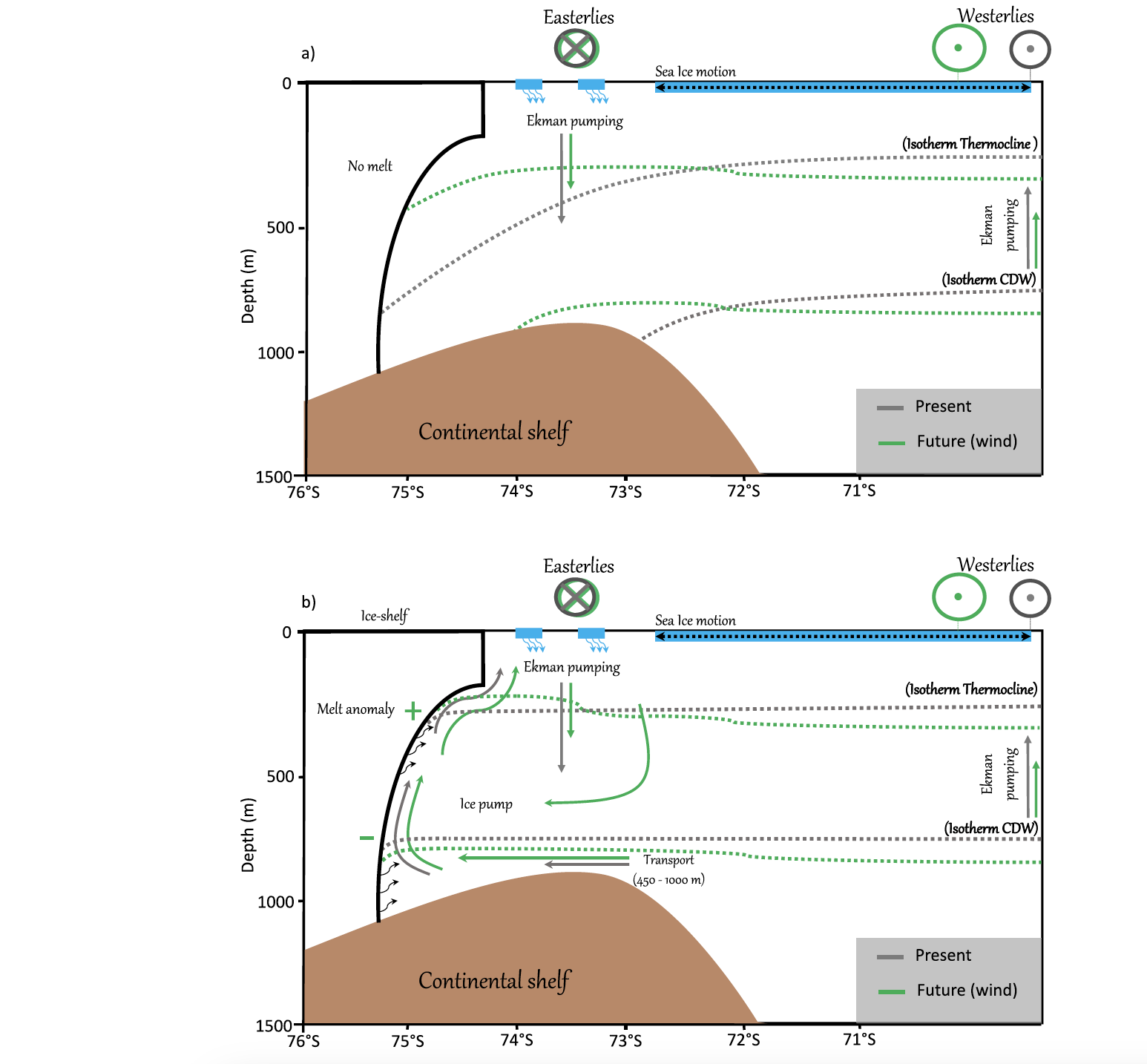Some good reasons to include ice sheets in Earth System Models
In their recent paper, Marion Donat-Magnin and colleagues bring strong arguments in favour of the inclusion of ice sheet models in Earth System Models (ESMs).
The first part of their work revisits the study of Spence et al. (2014) in which poleward shifting winds were shown to warm the ocean subsurface along the Antarctic coast. The mechanism proposed by Spence et al. (2014) was based on Ekman dynamics, but did not include ice shelf cavities. Donant-Magnin et al. have embedded a regional 1/12° ocean model configuration within Spence’s global simulations, including ice shelf cavities. They find that the melt-induced circulation (Jourdain et al. 2017) transports CDW (Circumpolar Deep Water) southward across the continental shelf. As offshore CDWs are cooled by the Ekman mechanism (Spence et al. (2014)), the melt-induced circulation tends to cool the subsurface and therefore to decrease melt rates near grounding lines. This clealry indicates that there might be large biases in subsurface temperature projections in models that do not include ice shelf cavities.
 Schematic of the ocean response to poleward shifting winds in absence (upper) or presence (lower) of ice-shelf melting.
Schematic of the ocean response to poleward shifting winds in absence (upper) or presence (lower) of ice-shelf melting.
In the second part of their paper, Donat-Magnin et al. (2017) describe the effect of changing ice dynamics (grounding line retreat and glacier thinning) on the ocean properties and subglacial melt rates. Cornford et al. (2015)’s ice-sheet simulations are used to prescribe ice shelf drafts corresponding to years 2000 and 2100 (under a strong melting scenario). For “future” grounding lines, a larger area od ice is exposed to warm deep waters, so that the melt-induced circulation intensifies in the entire ice-shelf cavity. This, in turns, leads to stronger melt rates for most of the ice/ocean interface. This feedback clearly indicates that melt rates connot be calculated from an ocean model without accounting for the response of the ice dynamics. In other words, they are a strong incentive to couple ocean and ice sheet modesl.
 Depth of the ice-shelf draft prescribed from Cornford et al. (2015), corresponding to 2000 (left) and 2100 (right)
Depth of the ice-shelf draft prescribed from Cornford et al. (2015), corresponding to 2000 (left) and 2100 (right)
This study was partly funded by the TROIS AS ANR project, and the simulations were run on the occigen supercomputer at CINES.
Reference
Donat-Magnin, M., Jourdain, N. C., Spence, P., Le Sommer, J.. Gallée, H. and Durand, G (2017). Ice-shelf melt response to changing winds and glacier dynamics in the Amundsen Sea Sector, Antarctica. J. Geophys. Res. Oceans, 122 (12), 10206–10224. doi:10.1002/2017JC013059